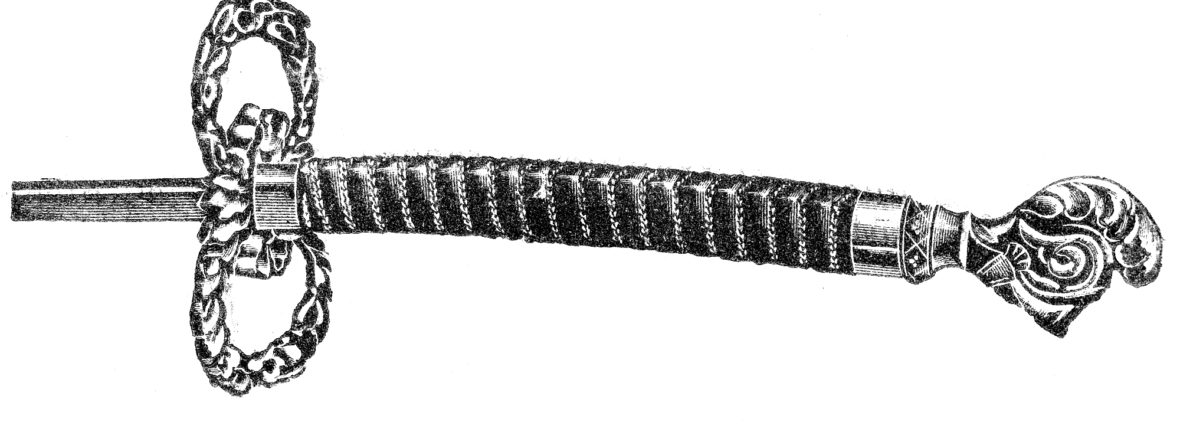French Fencing Sword Glossary
A glossary of french fencing sword components including the foil (fleuret) and the dueling sword (epee).
French Fencing Sword Blade & Tang
 Blade: A foil or épée blade is made of spring steel and yields when bent. Though antique dueling blades were made slightly flexible, modern fencing blade metallurgy has foolishly shifted towards overly flexible blades. The blade has a tang, often threaded, which passes through the other weapon components holding the hilt together.
Blade: A foil or épée blade is made of spring steel and yields when bent. Though antique dueling blades were made slightly flexible, modern fencing blade metallurgy has foolishly shifted towards overly flexible blades. The blade has a tang, often threaded, which passes through the other weapon components holding the hilt together.
Button: The button is the covering over a blunted blade’s point. The purpose of the button is to slightly cushion and broaden the point’s impact for safe practice. Buttons were traditionally made of leather and cord, though recently have been made of metal and plastic.
Point: The point is the uncovered end of a weapon’s blade. On dueling weapons the point would be needle sharp, though for training they’re blunted by either rolling the point or flattening it into a nail head and covered it with a button.
Foible, Middle & Forte: The blade is generally divided into three parts for training purposes: the faible or ‘weak’ (last 1/3), the middle, and the forte or ‘strong’ (1/3rd closest to the guard)
Curve (Blade): The curve of the blade refers to the gentle downward bend given to the blade in order to suggest the flex in a regular direction. Regular bending in one direction helps prolong the life of the blade.
Cant: A blade’s cant is the inclination of the tang away from the angle of the blade. The cant is set to the user’s preference and the weapon’s designed use.
Shoulder: The junction between the blade and the tang that rests against the guard. This is also sometimes referred to as the heel.
Neck: The neck is the square portion of tang often only the first one or two inches long from the shoulder. This square architecture is critical for a grip to fit securely and prevent rotation.
French Fencing Sword Hilt
Rosette: A rosette is a metal element in front of the guard that’s either decorative or structurally supportive. Rosettes secure by stacking on the tang or riveting onto the guard.
Guard: Guards sit immediately behind the blade providing protection for the hand and act as a fulcrum for deflecting opposing weapons; guards act as the shield. There are many styles of guards that function the same, though with differing subtleties.
Hilt: The hilt is the combination of components making up the manipulated and protective portions of the weapon including the guard, pad, grip & pommel.
Pad: A leather or cushioned cloth pad behind the guard designed to cushion the fingers if impacted against the guard.
Martingale: A martingale is a small leather or steel finger loop attached to the tang between the guard and grip to prevent disarms and emphasize particular techniques, such as coupés.
Grip: The grip is how a swordsperson manipulates the weapon. There are varieties of grip styles, shapes and materials depending on the school of fencing and individual preference. Grips are designed for comfort and facilitation of the intended manipulation.
Pommel: Pommels hold all the weapon’s components together by threading onto the tang balance the weapon backward. Pommels were historically peened to the tang, though are threaded today for easy dismounting.
Tang Channel: The tang channel (or aperture; perforation) is the hole in all the hilt components through which the tang passes and secures with the pommel.

